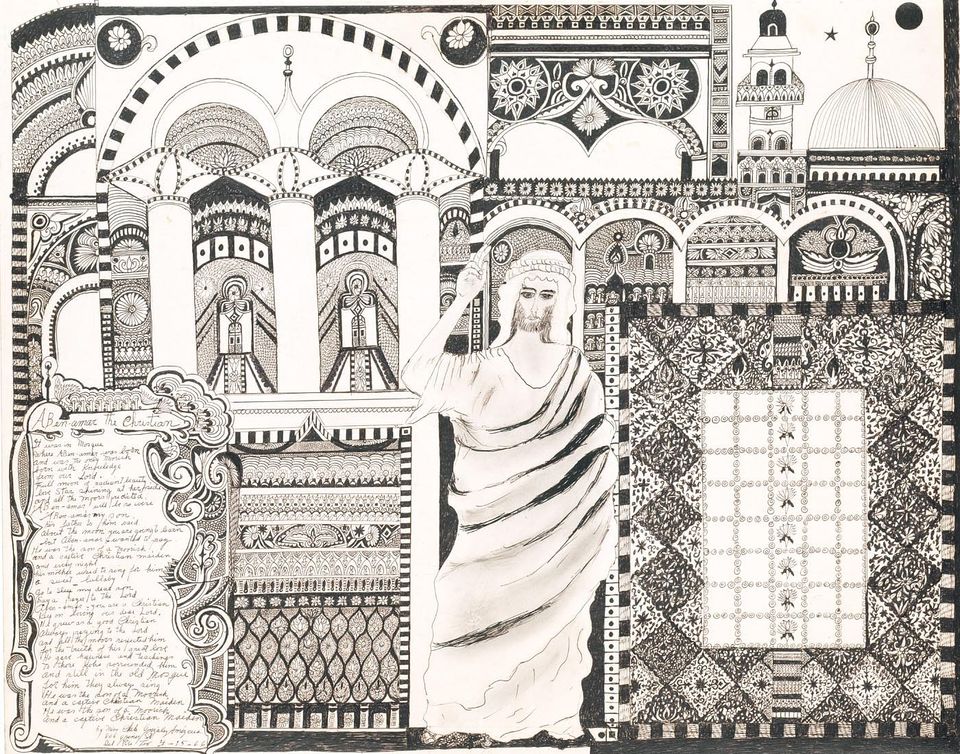
Consuelo "Chelo" González Amézcua called her works "filigree drawings" in reference to a delicate jewelrymaking style from her native Mexico. You can see the influence clearly in the intricate loops in the architectural mouldings and decorative supports throughout the drawing at right. Be that as it may, she greatly understates the presence of her art.
Amézcua was never formally trained. She worked with themes from the Texas border, where she immigrated with her family in 1913 at the age of 10 and worked at a five and dime until her death. I'm only giving the short version, but her entry on the Anthony Petullo Collection of Self-Taught and Outsider Art site features a bio and other examples of her work.
Those border themes emerge in a poem juxtaposed with the drawing Aben-amar the Christian. That poem is a song that tells the legend of a Christian raised in a land that might be Moorish Andalusia; the tradition, isolation, and integration in Amézcua's fantastic folk poem probably wasn't too far off from the day to day at the shop.
The religious content of the poem gives the work a scandalous edge, though they are perhaps less controversial placed within the context of the Texas border in the 1960s. Radical to this day is Amézcua's trademark ballpoint pen, formally integrated text, and decorative elements as abstraction. But anyone who has spent time in south Texas recognizes the visual culture that informs Amézcua's drawings. (Okay, maybe not this specific drawing; not so many mosques in the southwest.)


















